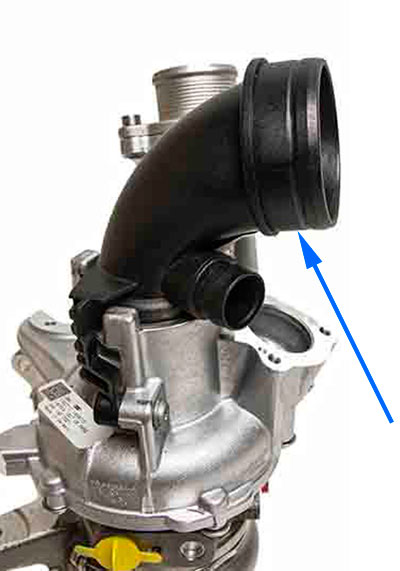Turbo Inlet Material properties is a subject that occasionally comes up, whether it is better to have plastic intake piping or metal.
The topic was raised in a forum thread on the subject of Turbo Inlet Pipes.

The Question:
Is it better to have this piece made out of plastic or metal with respect to heating of the intake air? The common thought is that plastic is better compared to aluminum because it has a much lower thermal conductivity.
Besides the thermal conductivity of the pipe material it is useful to consider the properties of the substance that is passing through the pipe that would receive the heat transfer. Air also has a low thermal conductivity, but of equal consideration is the condition of the air while in the intake system – it is moving.
How long the air may be in contact with heated inlet piping is an important consideration as anyone who has held a hot object can attest to. Pulling a hot bowl from a microwave can sometimes be accomplished without the use of oven mitts if the bowl is only held for a couple of seconds, where if the bowl had to be held for a long time it might possibly give the person a burn.
This raises the question of just how long the air is inside the Turbo Inlet Pipe. With some basic information about the engine and the inlet pipe it is easy to generate an estimate of the amount of time.
The Analysis:
To start the engine is 2L in volume, or 0.002 cubic meters. At idle the engine turns at approximately 800 revolutions per minute. This means that the volumetric flow rate at idle is approximately 0.8 cubic meters per minute or 0.013 cubic meters per second.
The turbo inlet pipe entrance is approximately 2 inches in diameter, which means the area that air passes through is 0.002 square meters.
With these pieces of information we can calculate the air velocity through the turbo inlet pipe, 6.6 meters per second.
If the turbo inlet pipe air passageway is 6 inches in length this means that any ‘slice’ of air is going to enter the TIP and after 0.023 seconds it will exit. So the air has approximately two one hundredths of a second to be heated by the TIP wall when the engine is operating at idle speed.
Of course the only air that would be heated directly would be the air in contact with the pipe wall, moving to the interior of the pipe the heat transfer would have to go from air to air.
Conclusion:
While heating of the intake air is something to be concerned about when trying to maximize engine performance, the material that the piping is made of is unlikely to have a meaningful affect on the temperature of the air passing through the system due to the very short time that any given volume of air is present inside the Turbo Inlet Pipe.
